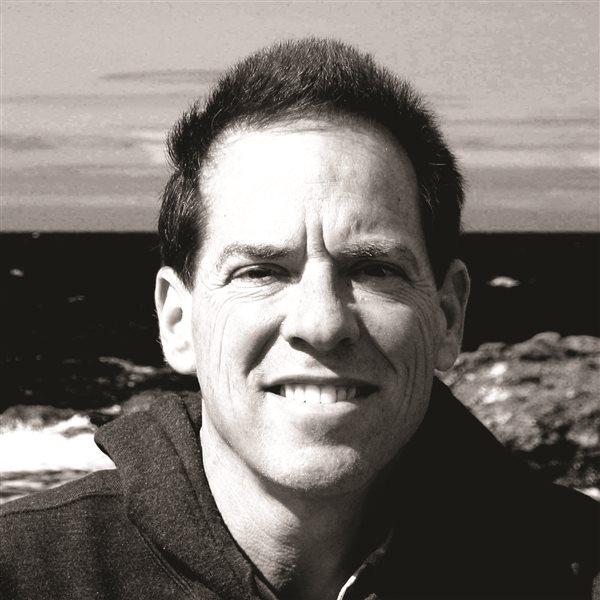
Exhausted, Jean and I stumbled off a Japan Airlines 737 in Misawa, at the remote northern tip of Honshu island. We were here to visit our son and his family. Despite three days of airline travel, piloting was far from my mind. With very little general aviation in Japan, I’d steeled myself to forget flying for three weeks. But that was about to change.
Our daughter-in-law, Desi, greeted us at the terminal and drove us to the other side of Misawa Airport, a field shared with the U.S. Air Force 35th Fighter Wing and the Japan Air Self-Defense Force 3rd Air Wing. Following a stop for visitor passes, we walked directly onto the base flight line. Moments later the airport temporarily closed.
“Capt. Austin Brown will now demonstrate the awesome power and maneuverability of the General Dynamics F-16 Fighting Falcon,” said an airshow announcer who was practicing with the ground crew around a pickup truck. With that, the Viper (as pilots prefer to call it) began a 14-minute solo aerobatic routine.
To say our hearts leapt into our throats would be an understatement, for the pilot was our son. Austin began flying with us as a child, standing to steer in cruise before he could reach the yoke from the seat. From then through his teen years we flew together whenever the opportunity arose. When Jean and I bought the Flying Carpet for family flying adventure, who could imagine it would lead our then-15-year-old to a coveted fighter-pilot career?
Now, following deployments around the world, Austin was completing training for his new role as Pacific Air Forces F-16 demonstration pilot. In this position he’ll represent our country and armed forces performing at airshows in friendly nations throughout Asia, from Japan to Korea, Singapore, Australia, and India. Team missions are to promote bilateral relations, reassure allied nations, and showcase U.S. combat capabilities. What unbelievable luck for mom and dad that his final practice performances would coincide with our arrival!
Along with traditional maneuvers such as the Cuban 8, split S, and double Immelmann turn, Austin showcased F-16 capabilities I found particularly astonishing as a lightplane pilot. For while the above accumulated-energy maneuvers can be accomplished by preaccelerating in aerobatic piston aircraft, others are hardly possible without the phenomenal thrust-to-weight ratio of a modern fighter jet.
One Viper maneuver, for example, calls for accelerating from a minimum-speed high alpha pass on the backside of the power curve (125 knots and 23 degrees angle of attack), directly into an ear-splitting, straight-up “muscle climb.” Imagine powering your Cessna or Diamond from slow flight directly into a vertical climb!
Another eye-opener was Austin’s knife-edge pass down the runway. In a 90-degree bank, the aircraft’s lift comes from the vertical stabilizer and rudder. Obviously that requires unimaginable engine power compared to what most of us fly. And consider controlling pitch with your rudder and using elevators for directional control! I later asked Austin which maneuver he finds most challenging.
“Honestly, Dad, they’re all tough in different ways. So, how about the coolest? The max climb goes straight vertical from 300 to 15,000 feet in 18 seconds, all while performing full-deflection aileron rolls. It can get a little disorienting when you see the world spinning around you so fast over that length of time.” No wonder fighter pilots boast of flying at “the tip of the spear!”
Safety considerations are paramount when flying aerobatics, especially in jets where mere seconds can make the difference in recovering successfully. Austin was trained in his new role by his predecessor, Capt. Ryan “Voodoo” Worrell, first in flight simulators, then a two-seat F-16D, and finally in solo practice evaluated from the ground.
The flight team associated with each performance consists of two pilots, one flying and one observing from the ground. The flying pilot reports altitude and airspeed at key points of every maneuver to the safety observer, who verifies they’re within safe parameters and can abort maneuvers at any time. Along with the pilots and two Vipers (one for backup), the demonstration team includes eight maintenance professionals addressing every technical aspect of the aircraft, and who double in ground-show and announcer duties. A KC-10 transports support crew and gear on longer missions and provides en-route aerial refueling for the Vipers.
Over our subsequent family vacation I discovered northern Japan’s rich aviation heritage. The Misawa Aviation and Space Museum features a full-size replica of the legendary Bellanca J-300, Miss Veedol, in which Clyde Pangborn and Hugh Herndon Jr. flew the first nonstop trans-Pacific flight from nearby Sabishiro Beach in 1931. Banners and even Miss Veedol cookies trumpet this accomplishment at the Misawa Airport terminal. In a darker chapter, World War II Japanese pilots practiced torpedo bombing for the Pearl Harbor attack at nearby Lake Ogawara. How times have changed; Japanese and U.S. forces now share the base as longtime allies.
There were nonaviation attractions too, of course. We toured Kyoto and Osaka, and we rode a ferry to Hakodate on Hokkaido island where Commodore Matthew Perry opened U.S. trade with Japan in 1854. Particularly memorable was remote and shocking Osorezan Bodaiji Temple, where Buddhist souls are believed to pass to the afterlife; the beautiful temple complex is sited in a hellish volcanic sulfur field.
But watching your son fly a solo F-16 airshow—that’s tough to beat. Just about every pilot dreams of flying fighters, but few of us achieve it. To think that one such aviator launched for takeoff in our own Flying Carpet.



